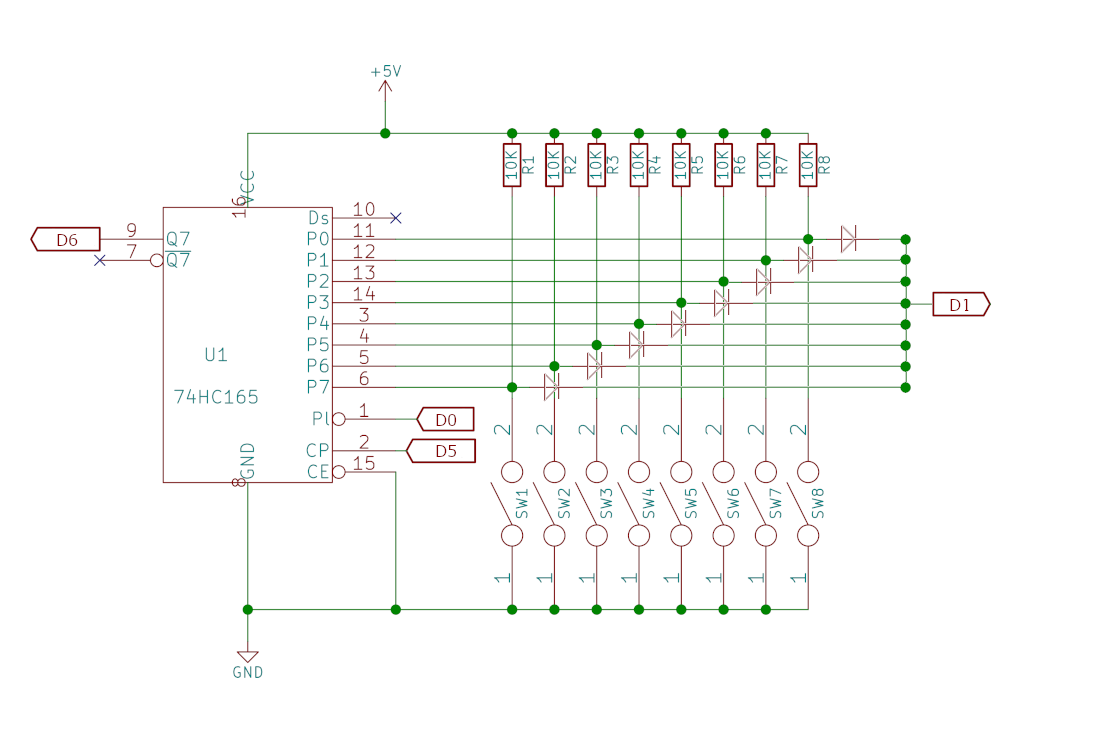

- 74hc165 hardware spi atmega serial#
- 74hc165 hardware spi atmega update#
- 74hc165 hardware spi atmega series#
Latched shift registers have an extra set of memory, so once the data is done entering the register you can flip a switch and show the outputs, but it adds another wire, software, and things to keep up with. As data enters a shift register via serial, it shows up on the first output pin, when a clock pulse enters in, the first bit shifts over 1 place, creating a scrolling effect on the outputs, for example 00000001 would show up on the outputs as 1 00001 000001 0000001 00000001 If your talking to other logic devices who are sharing the same clock and not expecting this, it could cause issues.
74hc165 hardware spi atmega serial#
This model only requires 2 wires to be controlled, so you can use 2 digital pins on the arduino, and break those 2 out to 8 more digital outputs some other models are parallel in serial out, they do the same thing but as inputs to the arduino (for example a NES gamepad) non latched This may be a downfall of this chip if you need it.

74hc165 hardware spi atmega series#
other 7400 logic series shift registers can go upto 16 bit serial in parallel out This means your arduino sends it data serially (on off pulses one after another) and the shift register places each bit on the correct output pin.
74hc165 hardware spi atmega update#
Since it is memory, if you do not need to update the register you can just stop "talking" to it and it will remain in whatever state you left it, until you "talk" to it again or reset power. HC means its a high speed cmos device, you can read about that on the link below, but what you basicly need to know about that is that it is a low power device and will run from 2 to 5 volts (so if your using a 3.3 volt arduino your ok) Also it can work properly at high speeds this particular chip has a typical speed of 78mhz, but you can go as slow or as fast (until it starts goofing up) as you want 164 is the model number for this chip, there is a large chart of them on wikipedia en./wiki/List_of_7400_series_integrated_circuits Next, 8 bit A shift register is made up of flip flop circuits, a flip flop is 1 bit of memory, this one has 8 (or 1 byte of memory). As mentioned earlier they come in all different flavors, and I also mentioned that I am using a 74HC164 8 bit, serial in parallel out, non latched, shift register so what does that all mean?!? First, the name 74 - means its part of the 74xx logic family, and since its logic it cannot directly control very much current (16-20ma for the entire chip is common), it only passes signals around, but that does not mean that signal is not going to a transistor which can switch a higher current load.


 0 kommentar(er)
0 kommentar(er)
